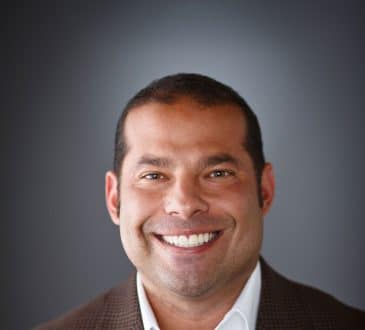Three Engagement Models to Launch Your Offshore Product Development

At a certain stage of development, every technology company faces the challenge of finding the right resources. It’s usually connected with the launch of a new product or boosting the existing one. To get racking on a new project, organizations have to look for IT talents abroad.
You might have already heard about outsourcing, outstaffing, R&D, and BPO. These are different models used to move IT operations offshore. Some of them are applicable for service-based tech companies, others have more benefits for product software companies. Let’s have a look at them in detail to reveal the best offshore development strategy for your company.
To choose the right engagement model, it is essential to analyze company’s capabilities. Odds are you have already come up with one of the following:
- “We have no idea how to do it, so we are ready to shift all processes to other guys who are good at this”.
- “We know exactly what should be done and want to manage the development process, just delegate some engineering staff to us”.
- “We need to build a team of star engineers but don’t know how to do it right in an offshoring location”.
Accordingly, your needs will be met in one of these offshore development models:
- Outsourcing
- Outstaffing
- R&D + BPO
Option #1: Outsourcing
Your board has an idea about a new software, and you even have the vision what results the ready-to-use product will bring. However, your company is not able to take up the project. For some reasons (like overloaded staff, no competence in the required technology, tons of other projects, or no engineering team aboard), your company decides to buy this expertise. Eventually, you reach an outsourcing provider.
Your provider chooses a technology stack that is going to be used in product development and assign people for this project. They may design the product from scratch or customize drafts from their previous projects and available code. Like any other kind of programming, the development of your product will also include documentation, testing, IT support & maintenance, additionally provided by the outsourcing vendor.
Outsourcing works well for non-tech organizations that do not employ software developers. A provider commits to develop your product, taking over full responsibility for it. You have your project done quickly and professionally.
Beware of Potential Risks
However, for technology companies & startups it is risky. Since you barely control the software development process, your intellectual property rights are at stack. It’s impossible to backup potential issues just through non-disclosure agreements. There are cases when outsourcing providers were hacked and their clients’ information was accessible to the third parties.
Moreover, venture investors don’t approve this model for technology startups because it’s too vulnerable. Delegating core business to vendors means a significantly lower control of the product development from co-founders. Hence, startups & software companies that deal with innovations and intellectual property should better avoid outsourcing unless their project is short-term and small.
Option #2: Outstaffing
Outstaffing means personnel leasing. Companies with sufficient tech expertise use this model to solve the problem of internal human resources. For example, you need two additional QA engineers in your team of developers. Suppose it is challenging to find such specialists in your country quickly, so you decide to go offshore and hire them remotely.
An outstaffing agency gives you engineering staff “for rent”, meaning that they join your product development. It is vital to understand that they only help you with product development and leave when the project finishes. Since you do not delegate any responsibilities, your party has to fully manage the project and be accountable for its results.
Outstaffed Personnel Lacks Dedication
As can be seen, in this model the focus is shifted to people. As a supervisor, you give tasks, control product development and keep in touch with the outstaffed personnel. Nevertheless, your status of a client doesn’t allow the team to treat you as their employer.
Firstly, it means that you still don’t have enough influence on them. Secondly, it brings fewer opportunities for employee engagement and getting genuine dedication. Thirdly, your remote engineers work at the vendor’s premises and daily communicate with developers from other projects, which presupposes some intellectual property risks.
Ultimately, the outstaffing model is more practical for middle-term projects where a few employees are involved. The vendor takes care of HR payroll, taxes, and employment issues while you have additional workforce for the project.
Option #3: R&D + BPO
Research and development office (R&D) is a software development center in an offshore location. This model enables you to enter a talent pool under your own brand and build an engineering team. Thus, your R&D office works independently.
Together with the product development, you’ll have to take care of the business side of your R&D facilities. It includes recruitment, legal issues, cash flow operations, HR payroll, accounting, real estate, and other activities unrelated to engineering. Here’s where the BPO part is instrumental.
BPO (business process outsourcing) is about delegating operational work to a service provider while keeping core business in-house. Instead of hiring another team of accountants, legal advisors, finance managers, or talent researchers, you hire a local service provider that manages all your R&D back-office functions.
Simply put, R&D + BPO allows you to outsource everything except for programming. Stay focused on your product, while your trusted provider will take care of everything to support your offshore R&D team without intruding into your software development.
Opportunities for Your Product Development
The R&D+BPO model is not new. Such global tech companies as Amazon, Google, Oracle, Reddit, Snap, Samsung, and others have already put it to the test in Ukraine. For example, an e-commerce company BigCommerce successfully went public in August 2020, having a big R&D team in Kyiv. The concept of an R&D has proved its legal compliance, and we expect more tech companies to switch to this engagement model.
At Alcor, we believe that an R&D office plays a crucial role for software companies that work on their own products. Not only does it open new opportunities for team management, but also diminishes risks inherent in other offshore development models. Just get in touch with a trustworthy service provider to leverage all benefits of your own R&D office in Ukraine.
Written by Dmitry Ovcharenko. Have you read?
These Are The World’s Top 100 Banks For 2021.
These Are The Top 100 Banks The United States For 2021.
Most Forward-Thinking Countries.
Most Entrepreneurial Countries.
Add CEOWORLD magazine to your Google News feed.
Follow CEOWORLD magazine headlines on: Google News, LinkedIn, Twitter, and Facebook.
This report/news/ranking/statistics has been prepared only for general guidance on matters of interest and does not constitute professional advice. You should not act upon the information contained in this publication without obtaining specific professional advice. No representation or warranty (express or implied) is given as to the accuracy or completeness of the information contained in this publication, and, to the extent permitted by law, CEOWORLD magazine does not accept or assume any liability, responsibility or duty of care for any consequences of you or anyone else acting, or refraining to act, in reliance on the information contained in this publication or for any decision based on it.
Copyright 2024 The CEOWORLD magazine. All rights reserved. This material (and any extract from it) must not be copied, redistributed or placed on any website, without CEOWORLD magazine' prior written consent. For media queries, please contact: info@ceoworld.biz
SUBSCRIBE NEWSLETTER








